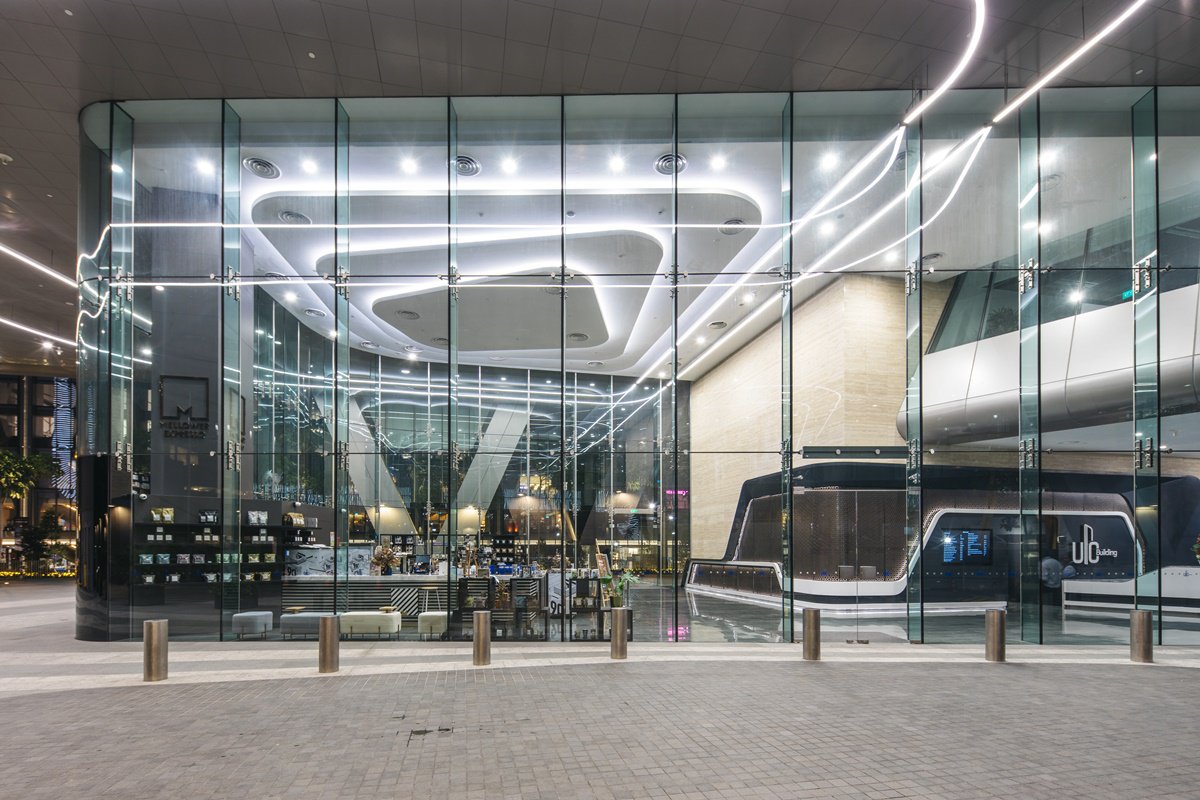
Trends
8 Examples of Good Architectural Lighting Design
July 08, 2021
Lighting has a significant impact on how people see and comprehend architecture. Lighting is the medium that allows us to see and appreciate the beauty in the buildings around us, whether they are illuminated naturally or artificially. Lighting may provide emotional value to architecture by assisting in the creation of an experience for those who use the area.
Architecture would probably not have the same impact if it didn't have lighting. Light, whether natural or artificial, brings attention to textures, colours, and forms of space, assisting in the further definition of architectural characteristics. Lighting also has an impact on how we appreciate architecture, and illumination enhances our perception of it even more.
Architecture would probably not have the same impact if it didn't have lighting. Light, whether natural or artificial, brings attention to textures, colours, and forms of space, assisting in the further definition of architectural characteristics. Lighting also has an impact on how we appreciate architecture, and illumination enhances our perception of it even more.
So, what distinguishes some architectural lighting ideas from others?
It's critical to understand three major components of architectural lighting: aesthetics, function, and efficiency, in order to achieve a good balance between lighting and architecture. Designers and architects focus on the emotional impact that lighting and architecture will have on residents in the aesthetic. It's where designers decide how people should feel when they go through a space.
The importance of the second aspect, function, cannot be overstated. While we want the lighting to look a specific way, we must also ensure that it accomplishes its primary goal of improving visibility. In order for occupants to feel comfortable while exploring a room or a whole structure, areas should be lighted. They should be able to see the ground and walls around them, giving them a sense of security. In today's world of green building and sustainability movements, the end product is critical. It's one thing to design a stunning lighting scheme, but it's quite another to design a stunning scheme that is also extremely energy efficient.
This can be accomplished by ensuring that the bulk of the light reaches its intended destination and that less light is wasted. The building will be more efficient if the amount of wasted light is reduced. LEDs have long been recognised as a more environmentally-friendly light source compared to traditional varieties. LEDs have changed over time as a result of technological advancements, gradually improving their brightness to power consumption ratio. In addition to that, a decrease in energy use also leads to a cheaper operating cost.
Here are some instances of good architectural lighting design paired with good architecture:
The importance of the second aspect, function, cannot be overstated. While we want the lighting to look a specific way, we must also ensure that it accomplishes its primary goal of improving visibility. In order for occupants to feel comfortable while exploring a room or a whole structure, areas should be lighted. They should be able to see the ground and walls around them, giving them a sense of security. In today's world of green building and sustainability movements, the end product is critical. It's one thing to design a stunning lighting scheme, but it's quite another to design a stunning scheme that is also extremely energy efficient.
This can be accomplished by ensuring that the bulk of the light reaches its intended destination and that less light is wasted. The building will be more efficient if the amount of wasted light is reduced. LEDs have long been recognised as a more environmentally-friendly light source compared to traditional varieties. LEDs have changed over time as a result of technological advancements, gradually improving their brightness to power consumption ratio. In addition to that, a decrease in energy use also leads to a cheaper operating cost.
Here are some instances of good architectural lighting design paired with good architecture:
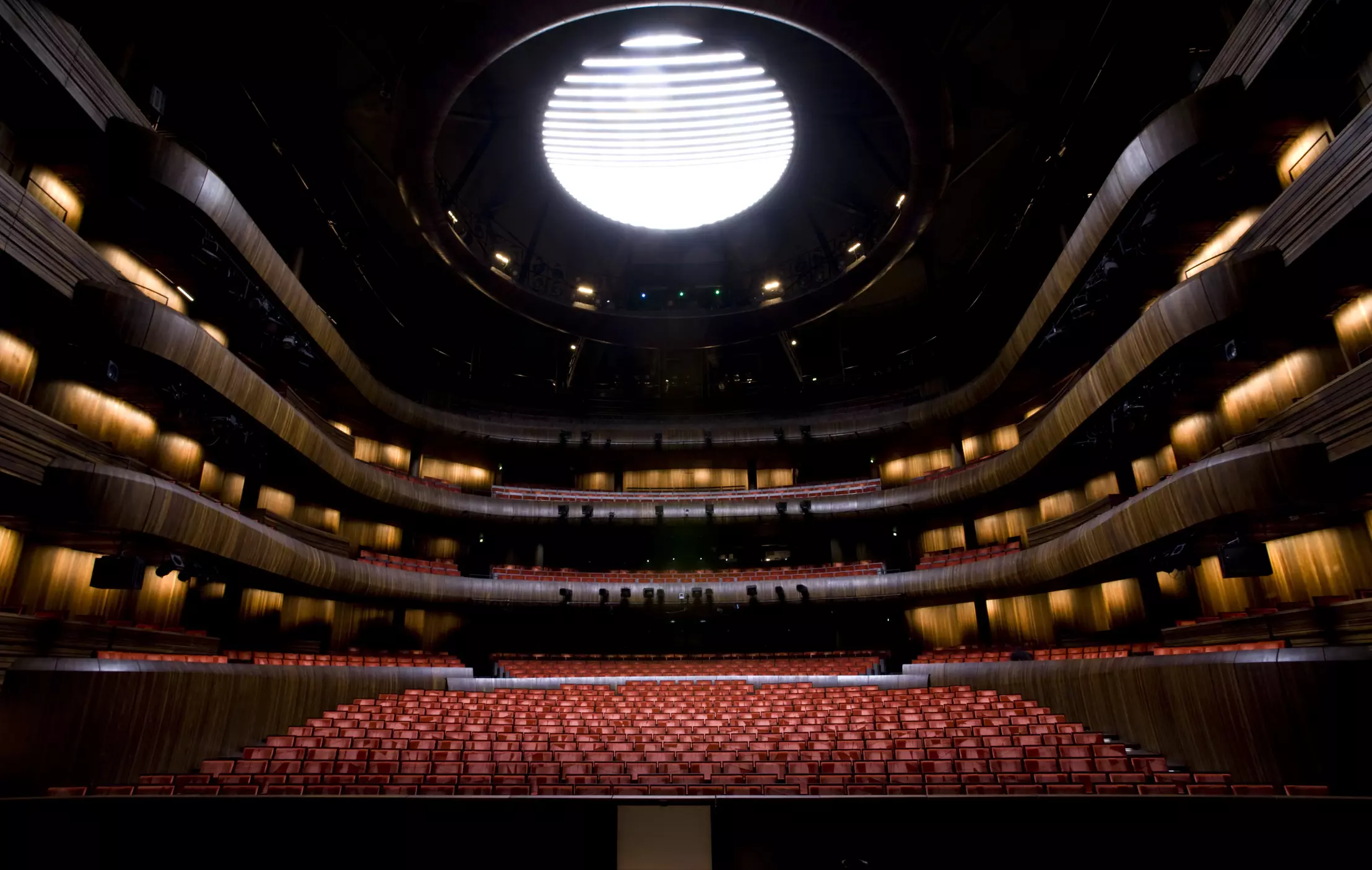
1. Oslo Opera House, Norway
The chandelier, which hangs inside the circular reflector of the Oslo Opera House, is an important feature in the hall since it serves multiple purposes. For instance, it is the major source of illumination in the auditorium, and it is the first time that LEDs have been used in such a setting. With a diameter of 7 metres and weighing all of 8.5 tonnes, the chandelier is made out of 5800 hand-cast glass crystals with 800 LED lights shining through them. The chandelier dresses the hall in cool diffused light, adding to the dramatic ambience. For maintenance, the entire chandelier can be lowered down to the floor.
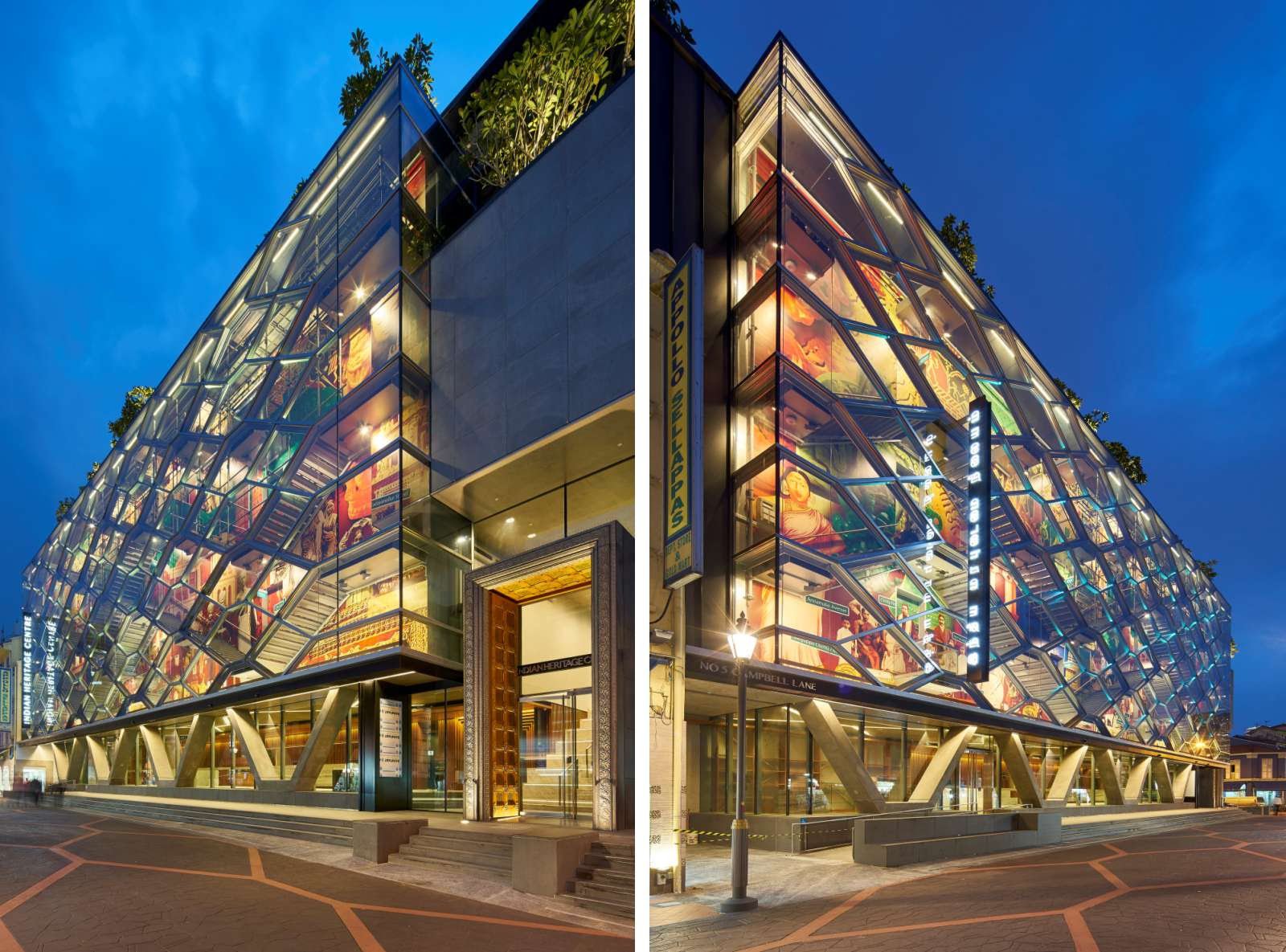
The four-storey Indian Heritage Centre building is an iconic, unique and sustainable building that blends both traditional Indian and contemporary architectural elements. The facade's architectural design is based on the baoli (or Indian stepwell) and aims to establish an urban platform for celebrating and appreciating Indian culture.
The building houses five permanent galleries, a museum shop as well as programming and activity spaces. The use of a translucent, shimmering façade to create the impression of the Centre as a "shining jewel" during the day, and its transformation into a "glowing lantern" of the Indian community at night with the lighting of the colourful façade mural, also captures the diversity and multi-faceted nature of Indian culture.
The building houses five permanent galleries, a museum shop as well as programming and activity spaces. The use of a translucent, shimmering façade to create the impression of the Centre as a "shining jewel" during the day, and its transformation into a "glowing lantern" of the Indian community at night with the lighting of the colourful façade mural, also captures the diversity and multi-faceted nature of Indian culture.
Set in the rejuvenated heart of Singapore's Financial district, V on Shenton is the ideal base for city living. Accentuating the unique geometrical patterns that encompass the building’s façade, the lighting design harmonises spatial planning throughout the interior and exterior spaces. The building’s architecture, lighting, and landscape all come together to make seamless composition, which is defined by its trademark hexagon shapes and structures.
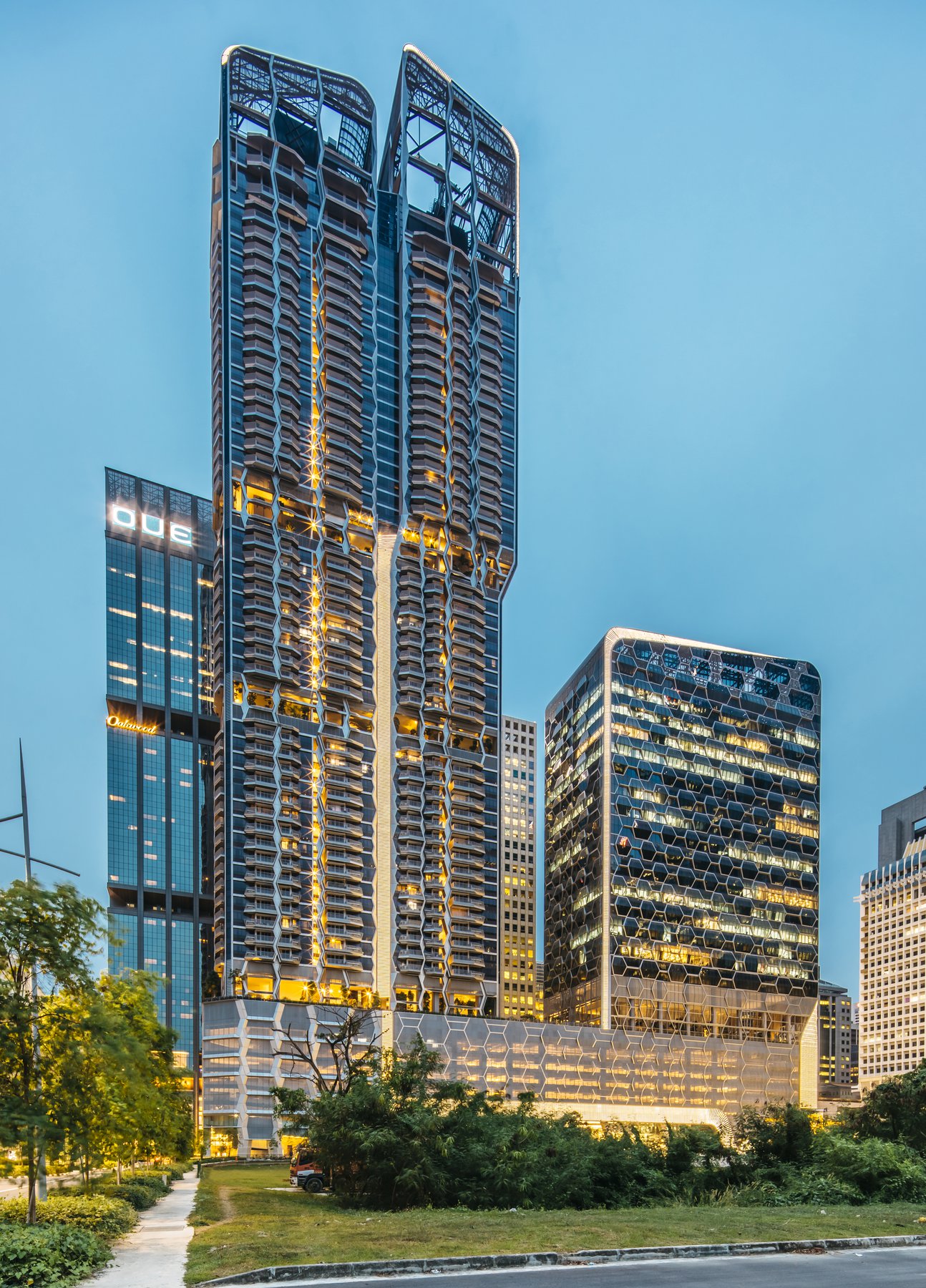
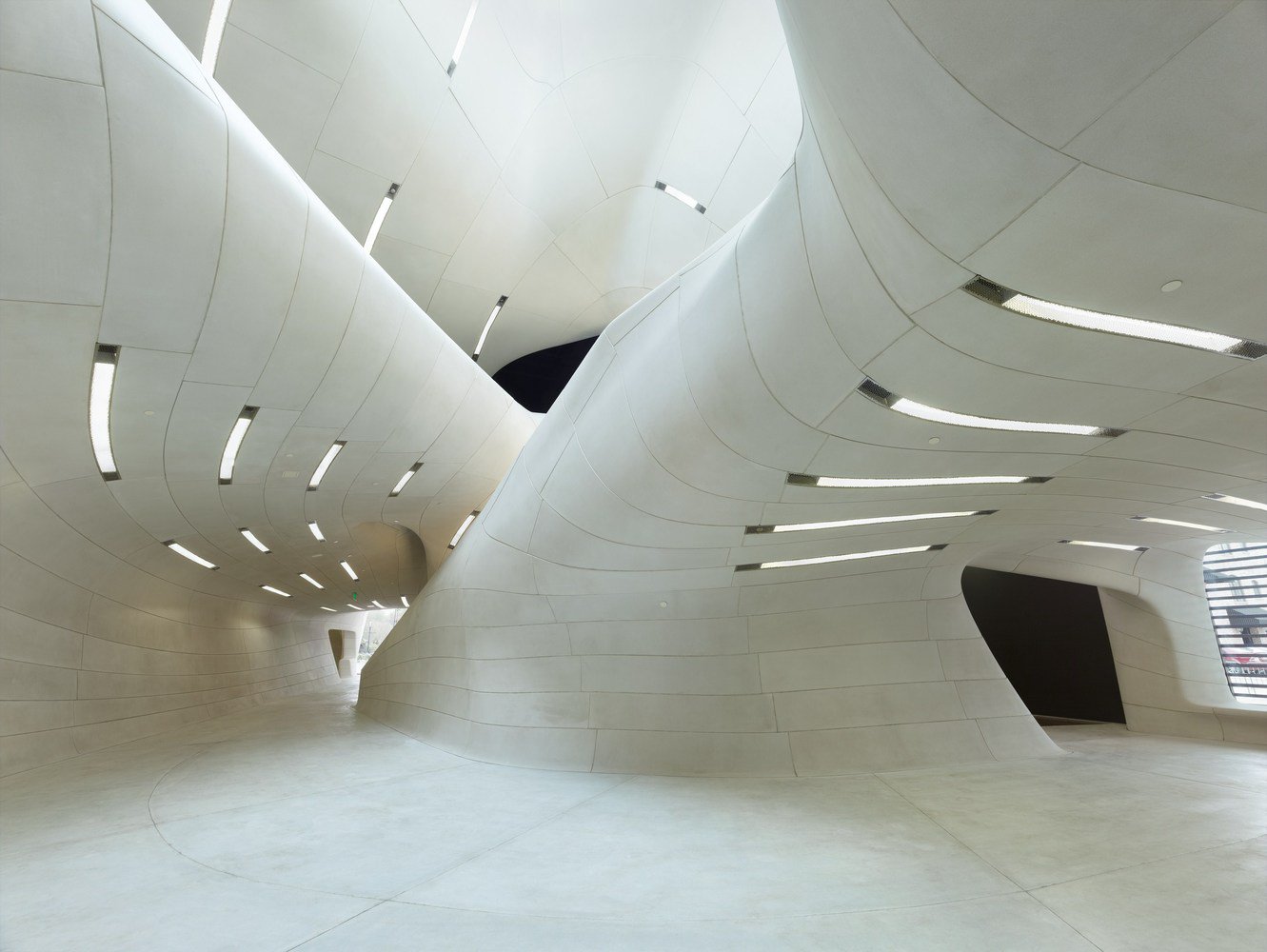
Located in historic Natchitoches, Louisiana, the Louisiana State Museum and Sports Hall of Fame combines two disparate collections that were previously housed in a collegiate coliseum and a nineteenth-century courthouse. The building, which is located on the banks of Cane River Lake in the oldest community in the Louisiana Purchase, mediates the interaction between sports and history, past and future, the container and the contained.
5. Ofunato Civic Centre and Library, Japan
The Ofunato Civic Center and Library is a cultural complex that contains a 1,100-seat main hall, a library, multi-purpose facilities, an atelier, a tea room, and a studio. It is situated in Ofunato, a town on Iwate Prefecture's Sanriku Kaigan coastline in northeastern Japan. As part of the project's development, more than 50 regional workshops and fieldworks were held here to foster engagement between architects, local communities, and government officials.
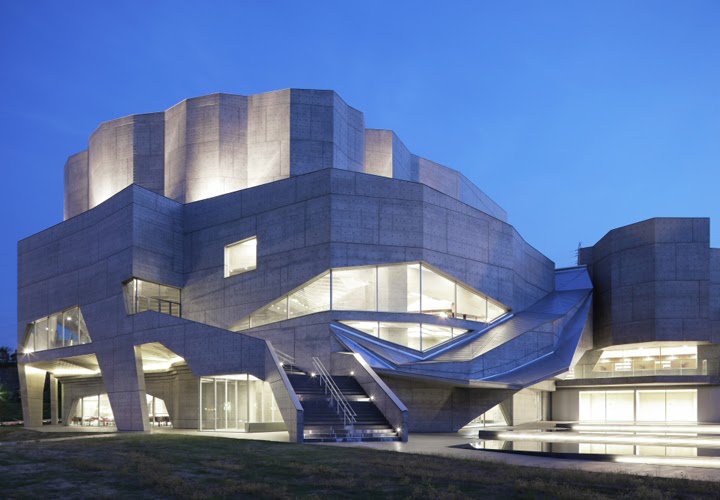
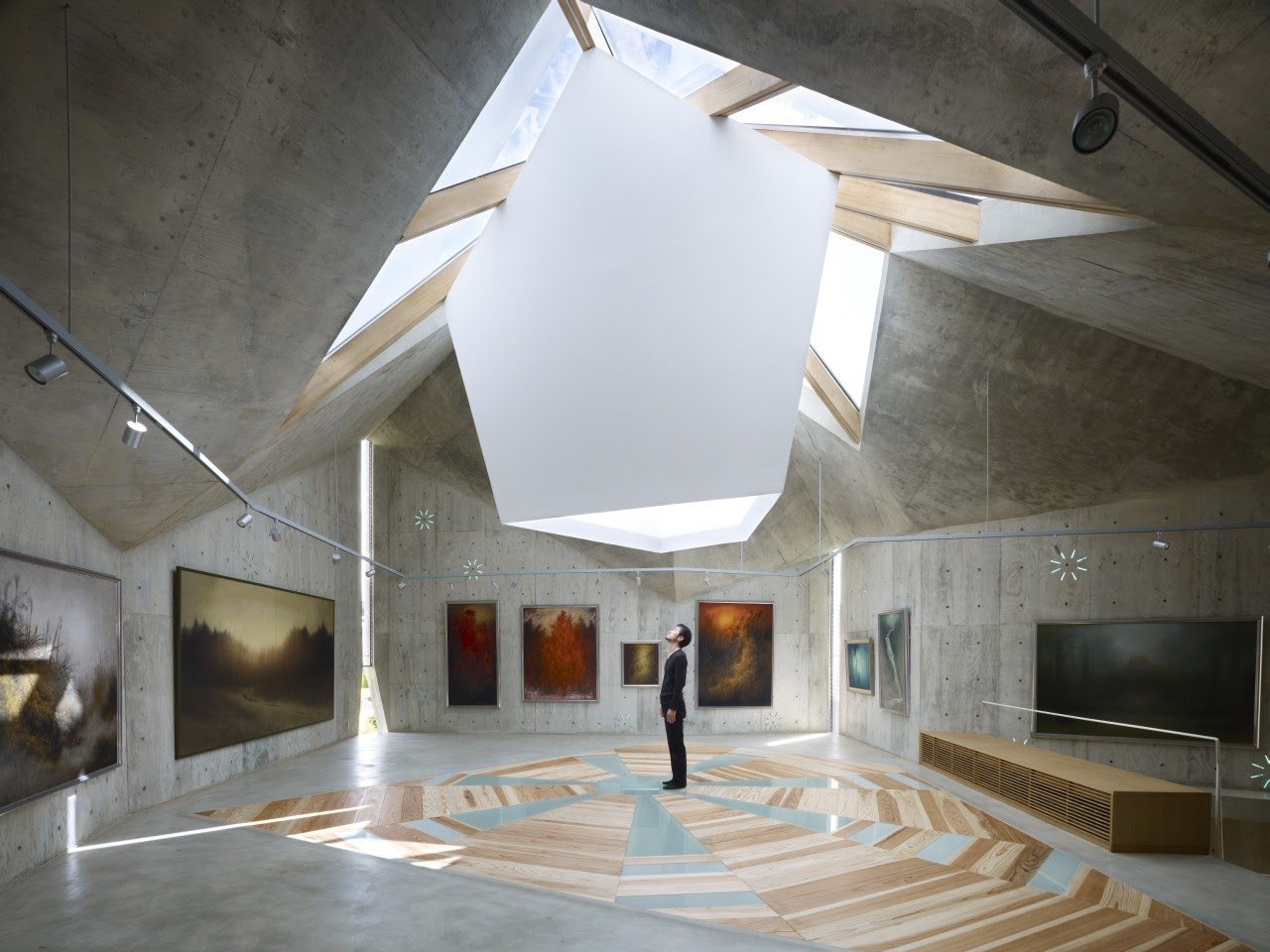
6. Mecenat Art Museum, Japan
The Mecenat Art Museum of Hiroshima is a privately funded endeavour, created by NAF Architect & Design and supported by a Japanese painting student to give exhibition space for his highly respected teacher, Mr Kakudo Goami. The design of the building is similar to an origami paper sheet that has been folded and unfolded to reveal angles and faceted parts. The interior features a sophisticated space that contrasts with the austere concrete exterior..
Because art museums value wall space, no visible windows have been included in the design. Instead, NAF Architect & Design opted for a series of triangular-shaped openings and myriad star-like cutouts, as well as skylights and a rather spectacular cylindrical structure, all of which allow natural light to illuminate the space.
Because art museums value wall space, no visible windows have been included in the design. Instead, NAF Architect & Design opted for a series of triangular-shaped openings and myriad star-like cutouts, as well as skylights and a rather spectacular cylindrical structure, all of which allow natural light to illuminate the space.
Inspiration comes in many forms at the JW Marriott Hotel Zhengzhou -- from the architectural design, which is based on the 1,500-year-old Songyue Pagoda, to the amenities, which were built with the modern traveller in mind. This 280-meter-tall luxury hotel is a destination for both local and foreign guests, located in the centre of Zhengdong New District CBD between the Convention and Exhibition Center and the Henan Art Center.
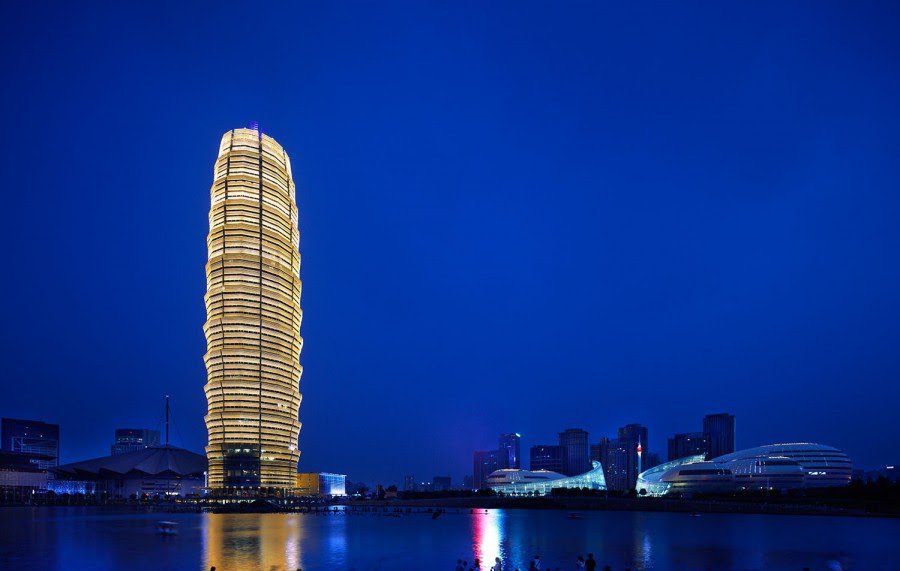
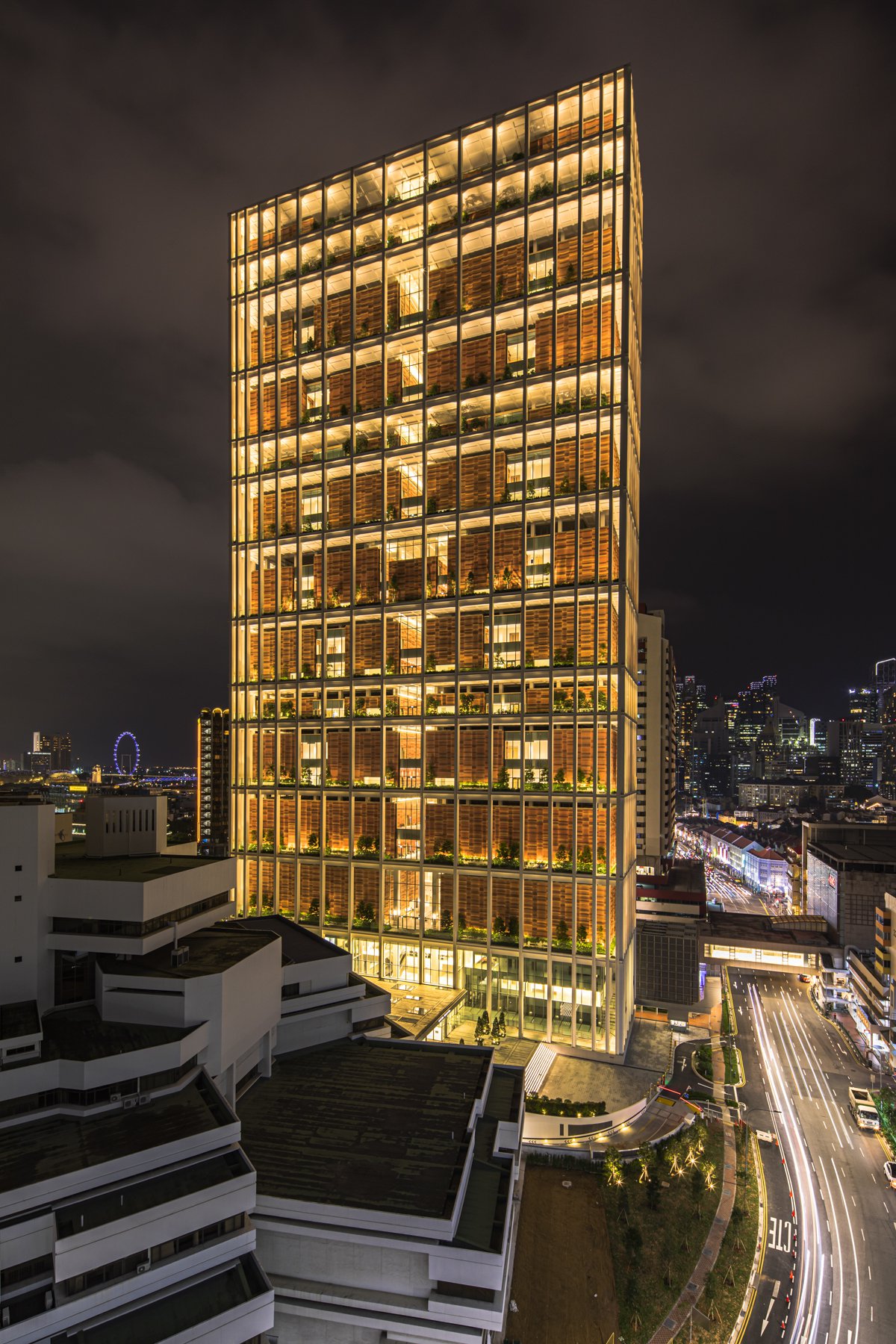
Architecturally, the State Courts, which was completed in 1975, departs radically from the neo-classical aesthetic of the old Supreme Court building, which is associated with British influence during the colonial period.
This black-and-white, nine-story building is done in a contemporary style, which stresses clean lines and geometric forms. Previously, the building housed 26 courtrooms -- today, there are 40 courtrooms and 28 hearing chambers. The design of the State Courts also reflects the philosophical ideals of the law. The front and back of the structure, which is surrounded by roads, are identical. The State Courts building was gazetted for conservation in 2013
This black-and-white, nine-story building is done in a contemporary style, which stresses clean lines and geometric forms. Previously, the building housed 26 courtrooms -- today, there are 40 courtrooms and 28 hearing chambers. The design of the State Courts also reflects the philosophical ideals of the law. The front and back of the structure, which is surrounded by roads, are identical. The State Courts building was gazetted for conservation in 2013
Conclusion
A good architectural lighting design is not just meant to serve an aesthetic purpose but is also functional and efficient. What makes the aforementioned examples of architecture iconic is that they all represent what excellent architectural lighting design can do for a building. Good architectural lighting design complements the existing building design and blends seamlessly with it to create a pleasing ambiance and lighting efficiency.